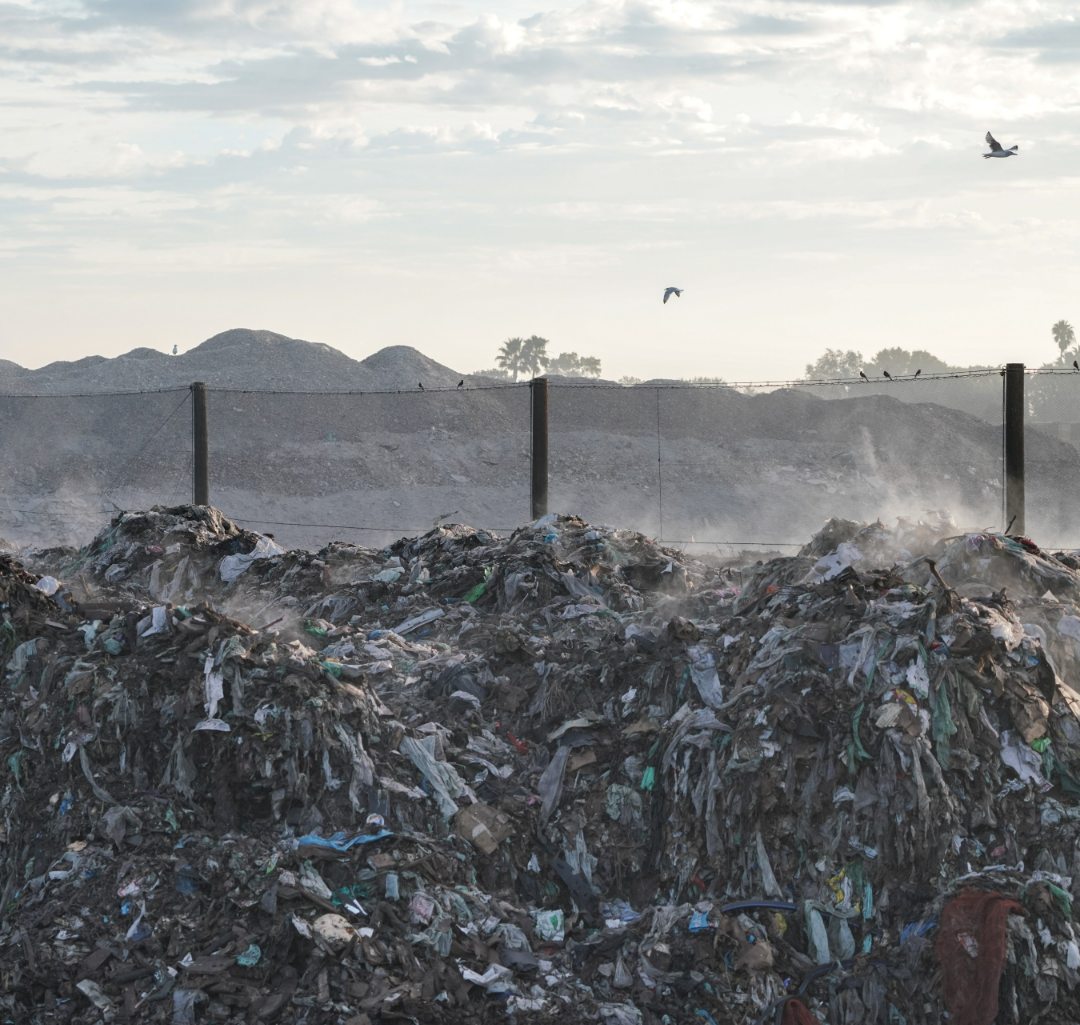
6 Easy Ways to Keep Clothes Out of Landfill
Guest blog by Bethany Worthington, the co-founder and editor of Ecothes, a fashion and lifestyle blog dedicated to helping you live more sustainably.
As consumers, we buy almost twice as many clothes as we did 15 years ago. Unfortunately, this means we're also throwing clothes away much faster than before, with pre-worn garments being thrown out on average 40% faster than 20 years ago.
With 92 million tonnes of textile waste dumped in landfills or incinerated annually, this equates to a rubbish truck load of textiles dumped every second.
Many of these discarded garments and textiles are made from non-biodegradable polyester blends, which will pollute landfills for hundreds of years.
So, if you've been asking yourself: “what can I do to be part of the solution and not the problem?”, you're in the right place.
I’ll walk you through some easy ways you can keep your old clothes out of landfills and help prevent the growing mountains of clothes polluting rubbish piles worldwide.
1. Recycle your old clothes
You recycle your cardboard and plastic packaging without a thought. Why should your pre-loved clothing be any different?
Before you throw away old clothes, consider recycling them instead.
The majority of old clothing can be sold again or utilised into new fabrics for new clothing. This can have a major cost and energy saving. For example, clothes made from pre-used recycled cotton can save up to 99% water and 50% energy compared to virgin cotton.
Brands such as Thought have made it easier for customers to recycle their old clothing by partnering with TRAID.
TRAID is a UK-based circular textile recycling company transforming clothes waste into funds that help environmental and social organisations.
The company diverts 3,000 tonnes of clothes from landfills and incineration every year.
To discover how to recycle your clothing for free through the Thought x TRAID partnership, check out more info here, or print your free TRAID postage label here and get recycling!
2. If it's broken, fix it!
Think again if you see a small tear in your favourite blouse and think you can no longer wear it!
A handy sewing kit is a wardrobe essential to fix minor defects such as a missing button, a small rip in the sleeve, or a hole in the pocket of your jacket.
If you don't have a sewing kit to hand, most local tailors won't charge much for slight alterations or fixes either.
There are a bunch of easy tutorials on the Thought blog on how to darn socks and extend your clothes' life. Fixing your existing items instead of buying new ones can help save you money, keep clothing out of landfills, and reduce your carbon footprint.
3. Buy less but more durable clothing
Fast fashion business models are based on creating huge volumes of cheap clothing that prompts consumers to buy more, which has led to us filling our wardrobes full of low-quality items we'll wear once or twice at most.
One eco-conscious change we can make in our consumer habits is to buy less clothing, and when you do make a purchase, switch to brands creating high-quality garments built to last.
This tip also extends to footwear; rather than buying low-quality footwear, which falls apart after a couple of wears, choose sustainable footwear such as trainers or boots made from quality materials.
Thought's sustainable collection uses durable fibres such as hemp and organic cotton that are designed to last and won’t fall apart after a couple of washes. The collection’s are always versatile, and easy to style with other pieces in your wardrobe.
Investing in high-quality items saves you money in the long term and ensures your clothing will last without being discarded in landfills. It can also encourage you to shop for more timeless styles that won’t go out of style in three months time and act as a foundation for more outfits in your wardrobe.
4. Sell your old clothes online
Along with clothing recycling, selling your old clothes online is a great way to give your clothes a second life.
There are great online platforms such as:
- Vinted
- Depop
- Vestiaire Collective
- eBay
These platforms let you sell your preloved clothes to other eco-conscious consumers, and recoup some of the money you paid for the clothes in the first place.
Most of these online platforms have handy guides to help you get set up and start selling your clothes online, which include making sure clothes are clean, taking good quality photos, and writing accurate descriptions.
5. Donate to charity
Donating your pre-worn clothing to charity shops helps support important causes all over the UK.
Charity shops are usually happy to accept donated clothes, but make sure your clothes are clean and in good condition, and always call ahead before bagging up and dropping them off at your local charity store.
This is an excellent way to ensure your clothes get a new lease of life in someone else’s wardrobe and keep them out of landfill.
6. Switch to biodegradable fabrics
Synthetic clothing fibres such as polyester and nylon rely on fossil fuels to be produced and aren't readily biodegradable – meaning they'll stick around on the planet for hundreds of years.
On the other hand, natural fibres such as organic cotton, hemp, and Tencel are completely biodegradable and won't pollute the earth after you're finished wearing them.
Natural fibres also don’t shed microplastics like synthetic materials do, which is another major benefit for the environment.
Below we've included our favourite Thought pieces made with natural biodegradable fabrics from the new collection!

The Allie Lenzing™ EcoVero™ Cami Dress

The Libbie Lenzing™ EcoVero™ Blouse

The Oriel Tencel™ Jersey Peplum Top
Shop the new season.


